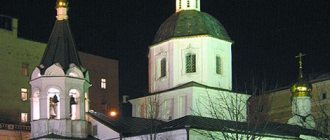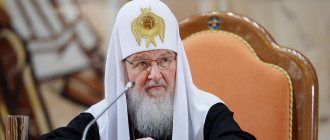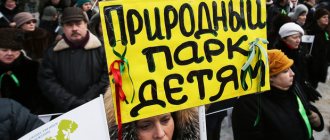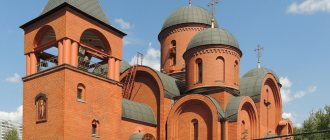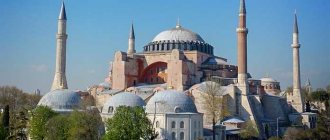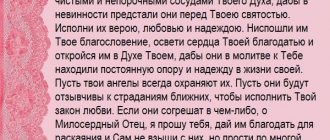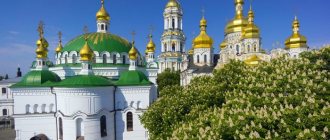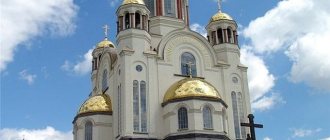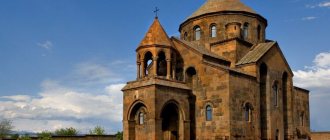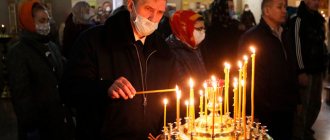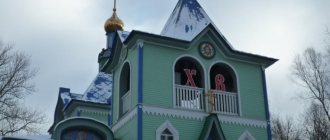Temple "Great Ascension" at Nikitsky Gate
Address: Bolshaya Nikitskaya, 36.
It was in this spacious church (not yet completed at that time) that Alexander Sergeevich Pushkin and Natalya Goncharova were married on February 18, 1831. Not only old intellectuals know about this, but also crazy street artists - they are the ones who decorated one of the nearby buildings with funny graffiti in which Pushkin and Goncharova take wedding selfies. Metropolitan Philaret, who, like Pushkin himself, was a Freemason, helped the great poet with the choice of a temple.
However, the history of the temple is connected not only with the name of Pushkin. According to one version, back in 1774, the secret wedding of Empress Catherine II herself and her favorite Grigory Potemkin took place there. Potemkin donated a decent amount of money to the temple for reconstruction, as well as wedding crowns with portraits of himself and the empress.
Here in 1921 Fyodor Chaliapin married his daughter Irina. The great singer not only led his daughter to the altar, but also read “The Apostle” himself during the sacrament.
Modern stars do not ignore the temple either. For example, in 2008, actor and showman Nikolai Fomenko chose him for a secret wedding with Natalya Kutobaeva.
- 1685 – the first stone church was built.
- 1848 - The temple takes on its current appearance.
- 1931 - closure of the temple, 1990 - return of the temple to the Church.
Temple "Great Ascension" at Nikitsky Gate
Restoration of the temple and donations from Muscovites
Alexey Artemyev has been restoring the paintings of the church for more than 10 years. The restorer, recognized back in Soviet times, restored more than one temple in the 1990s. For recreating the painting of the Cathedral of Christ the Savior, he was awarded a medal from the Academy of Arts.
On May 20, 1999, the temple was consecrated. That year, the 200th anniversary of the birth of Alexander Pushkin was celebrated, and the church became one of the venues for the celebration.
In 2002–2004, a bell tower was built, which fit very well into the architectural appearance of the temple. The author of the project, Oleg Zhurin, took as a basis the preliminary design of Fyodor Shestakov. Zhurin also took part in the restoration of the Kazan Cathedral on Red Square and many other architectural monuments. Muscovites raised funds for the bells, decoration and restoration of the church.
Today in Great Ascension you can hear not only the ringing of bells. Choirs perform in the church with excellent acoustics, for example during the Moscow Easter Festival.
Temple of Elijah the Prophet of the Ordinary in Obydensky Lane
Address – 2nd Obydensky lane, building 6 (Kropotkinskaya metro station).
One of the few churches that did not cease activity throughout the Soviet era. They tried to close it twice - in the 30s and 40s, but the first time the parishioners themselves managed to defend their native church, and the second time, due to military concerns, the authorities themselves forgot about the already prepared order. In April 1973, Alexander Solzhenitsyn married his second wife Natalya Svetlova here, and then baptized his two sons. A year after the wedding, the writer and his family were expelled from the country.
The temple attracts Muscovites with its late opening hours - it is open until 22.00 (usually Orthodox churches close around seven in the evening). The church shop at the entrance amazes with the variety and richness of goods, so if you need to choose a good gift for Orthodox family and friends, there is no better place. The temple contains important shrines, including those transported during the Soviet years from other, closed churches: the Icon of the Mother of God “Unexpected Joy” from the Kremlin, the Vladimir Icon of the Mother of God of the 17th century from the Conception Monastery, the Savior Not Made by Hands, a piece of the belt of the Mother of God, particles of the relics of St. Seraphim Sarovsky.
- Built in 1702.
Temple of Elijah the Prophet of the Ordinary in Obydensky Lane
Soviet period: Chaliapin's singing and transformation into a high-voltage laboratory
In the 20th century, the temple witnessed revolutionary events. In October 1917, there were street battles in Moscow, including on Tverskoy Boulevard, Arbat and Nikitsky Gate Square. On the morning of October 28, the Kremlin was occupied by cadets, but on November 2, after artillery shelling, they surrendered to the revolutionary troops and left the Kremlin. It was in the Great Ascension Church that the funeral service was held for the dead students and cadets.
In 1920, the wedding of Fyodor Chaliapin’s daughter took place in the church; the famous singer himself read the Apostle.
On April 5, 1925, Patriarch Tikhon served his last liturgy in the church. He was elected in 1917 and became the first patriarch in Russia since 1721. Two days after the service, Tikhon died.
In 1931 the temple was closed, and in 1937 the bell tower was demolished, but the church itself survived. At first there was a garage, and in the 1960s there was a laboratory for high-voltage gas discharges and lightning protection of the G.M. Energy Institute. Krzhizhanovsky. The space of the temple was filled with installations for artificial lightning, balls and spirals.
In 1987, the laboratory moved out, and the temple was transferred to the Russian Orthodox Church. On September 23, 1990, Patriarch Alexy II held the first service there. From that moment on, a new chapter began in the history of the Great Ascension - restoration.
Temple of Simeon the Stylite on Povarskaya
Address – Povarskaya street, building 5, building 1.
This small but ancient temple, built in the Russian pattern style, became the place where several legendary couples exchanged vows. In 1801, Count Sheremetyev and the serf actress Praskovya Zhemchugova secretly got married here, and in 1816, the writer Sergei Aksakov and Olga Zaplatina, the daughter of Suvorov’s general. Documents about Aksakov’s wedding are still kept in the church archives. And in 1866, the wedding of another famous person, Chief Prosecutor of the Synod Konstantin Pobedonostsev, took place with Elizaveta Engelhardt. Parishioners of the temple also included Sophia’s parents, Leo Tolstoy’s wife, Count A.P. Tolstoy and Gogol, who then lived in his house.
Another bright wedding happened in the temple after the revolution - in 1918 she married Yu.M. Neelova Elena Sergeevna Nyurenberg, future third wife of Mikhail Bulgakov. During the Soviet years, the church was closed, but it was featured in one of the episodes of the film “Ivan Vasilyevich Changes His Profession.” And already in 2005, the ancient walls welcomed another famous couple - Nikolai Karachentsev and his wife Lyudmila Porgina. The couple got married on their 30th wedding anniversary, after the accident the actor got into.
- Built in 1679
- 1938 – closing
- 1965-1966 – restoration
- 1991 – return of the temple to the Church.
Temple of Simeon the Stylite on Povarskaya
Five great architects: who built the church?
A century later, Count Grigory Aleksandrovich Potemkin decided to build a regimental church here (he was a commander in the Preobrazhensky Regiment). The new temple was built next to the old one.
Construction began in 1798, a year before Pushkin's birth, and was completed in 1836, a year before his death. But finishing work and interior painting of the temple continued for another 12 years.
The first architect of the project was Vasily Bazhenov. A little later, the temple was taken over by Matvey Kazakov, who left a great architectural legacy in Moscow. Among his works are the Senate of the Moscow Kremlin, the palace in Tsaritsyn, the Petrovsky Travel Palace and the Governor General's House on Tverskaya (now the Moscow City Hall is located in the rebuilt building).
During the fire of 1812, the temple was badly damaged and had to be rebuilt. The project was led by Fyodor Shestakov, known for his work in the Empire and Classicism styles. For example, he designed and built the fence of the Alexander Garden of the Moscow Kremlin, the refectory of the Church of the Nativity of John the Baptist on Presnya, the bell tower and refectory of the Church of St. Nicholas in Tolmachi. After Shestakov’s death in 1836, Evgraf Tyurin took over the temple. He built the Epiphany Cathedral in Elokhov, the Church of the Martyr Tatiana at Moscow State University named after M.V. Lomonosov and restored the Arsenal in the Moscow Kremlin. Osip Bove, the architect of the Manege, the Bolshoi Theater, the Alexander Garden and the Triumphal Gate, also had a hand in the Great Ascension.
Church of the Exaltation of the Holy Cross on Chisty Vrazhek
Address – 1st Truzhenikov Lane, 8/1, Kyiv metro station
Now let’s move slightly beyond the Garden Ring, to the outskirts of the Kyiv metro station. At the beginning of the twentieth century, this place was considered almost a suburb, which is why Anton Pavlovich Chekhov chose it for a secret wedding.
Chekhov really didn’t want a magnificent ceremony, so even the bride, actress Olga Knipper, found out about the wedding literally a couple of days before. And the writer decided to outwit his relatives and friends. He sent everyone an invitation to a dinner party. While the guests were sitting at the table and waiting for the hosts, wondering about the purpose of the dinner, the newlyweds quickly got married and immediately left for Nizhny Novgorod. Only four witnesses and church watchmen were present at the Sacrament. Already from the trip, Anton Pavlovich sent a telegram to his family with good news.
- Year of foundation: 1658.
- 1930 – closing
- 1993 – return of the Church.
Church of the Exaltation of the Holy Cross on Chisty Vrazhek
Temple of the Icon of the Mother of God “The Sign” in Perovo
Address: Moscow, Lazo street, building 5, Perovo metro station, Enthusiastov Highway.
Here, according to legend, Tsarina Elizaveta Petrovna secretly married her favorite, Count Alexei Razumovsky. However, there is no exact confirmation of this information. It is only known that in 1744 the estate on the territory of which the church was located was granted to Razumovsky, and he spent enough money on its decoration. Elizabeth also presented the church with luxurious utensils and even embroidered vestments for the Perov clergy herself. They say that the couple was blessed for marriage by the empress’s personal confessor, Fyodor Dubyansky. Different sources call the date of the wedding either 1742 or 1744. In any case, I want to believe in the beautiful legend, and architecturally the church is an interesting example of the “Golitsyn Baroque”
- The year of completion of construction is 1705.
Temple of the Icon of the Mother of God "Znamenie" in Perovo Tags weddings temples Moscow churches
